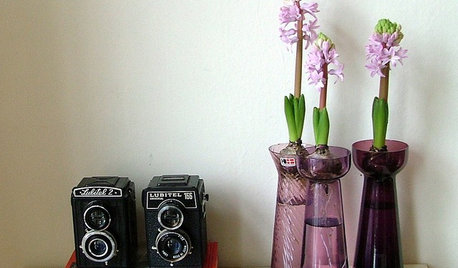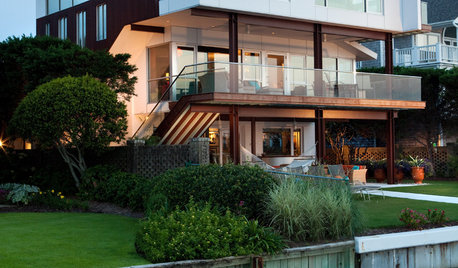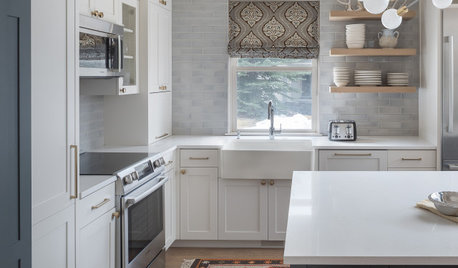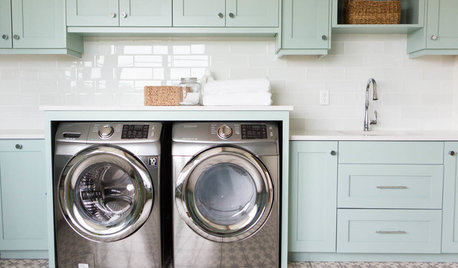when do the days get long enough for growth?
elizh
13 years ago
Related Stories

KITCHEN DESIGNTrending Now: 25 Kitchen Photos Houzzers Can’t Get Enough Of
Use the kitchens that have been added to the most ideabooks in the last few months to inspire your dream project
Full Story
HOUSEPLANTSGet Spring-Like Hyacinth Blooms All Winter Long
Try one of these forcing methods for cheery, colorful flowers to brighten wintry days
Full Story
CONTEMPORARY HOMESHouzz Tour: Strong Enough for Storms, Comfy Enough for a Family
Hurricanes won’t faze this contemporary waterfront home in North Carolina — and mixed reactions don’t faze its owner
Full Story
KITCHEN COUNTERTOPSWhen One Countertop Material Isn’t Enough
Combining counter materials in the kitchen can create a dramatic look, improve function and stretch the budget
Full Story
We Simply Can't Get Enough: The Sunburst Motif
New Interpretations of the Sun Still Add Fire to a Room
Full Story
FEEL-GOOD HOMESimple Pleasures: Get Cozy on a Cold Day
Some things are best when the weather is bad. Heat up some cocoa and join the discussion
Full Story
MOST POPULARA Fine Mess: How to Have a Clean-Enough Home Over Summer Break
Don't have an 'I'd rather be cleaning' bumper sticker? To keep your home bearably tidy when the kids are around more, try these strategies
Full Story
KIDS’ SPACES7-Day Plan: Get a Spotless, Beautifully Organized Kids’ Room
Turn chaos into calm one step at a time in children’s rooms
Full Story
ORGANIZING7-Day Plan: Get a Spotless, Beautifully Organized Kitchen
Our weeklong plan will help you get your kitchen spick-and-span from top to bottom
Full Story
LAUNDRY ROOMSRoom of the Day: A Family Gets Crafty in the Laundry Room
This multipurpose space enables a busy mother to spend time with her kids while fluffing and folding
Full Story







tapla (mid-Michigan, USDA z5b-6a)
elizhOriginal Author
Related Professionals
Londonderry Landscape Architects & Landscape Designers · Maple Valley Landscape Architects & Landscape Designers · Sahuarita Landscape Architects & Landscape Designers · Buford Landscape Contractors · Stamford Landscape Contractors · Brandon Landscape Contractors · Davis Landscape Contractors · Mount Kisco Landscape Contractors · New Baltimore Landscape Contractors · Oxnard Landscape Contractors · South Hackensack Landscape Contractors · West Chicago Landscape Contractors · Casselberry Landscape Contractors · Winchester Fence Contractors · La Puente Outdoor Lighting & Audio Visual Systemsreg_pnw7
Embothrium
tapla (mid-Michigan, USDA z5b-6a)
elizhOriginal Author
elizhOriginal Author
greenman28 NorCal 7b/8a
reg_pnw7
gardengal48 (PNW Z8/9)
plantslayer
Embothrium
plantslayer
hemnancy
elizhOriginal Author
elizhOriginal Author
pdxwindjammer
tcstoehr
Embothrium
plantslayer
Embothrium
Ratherbgardening
Embothrium